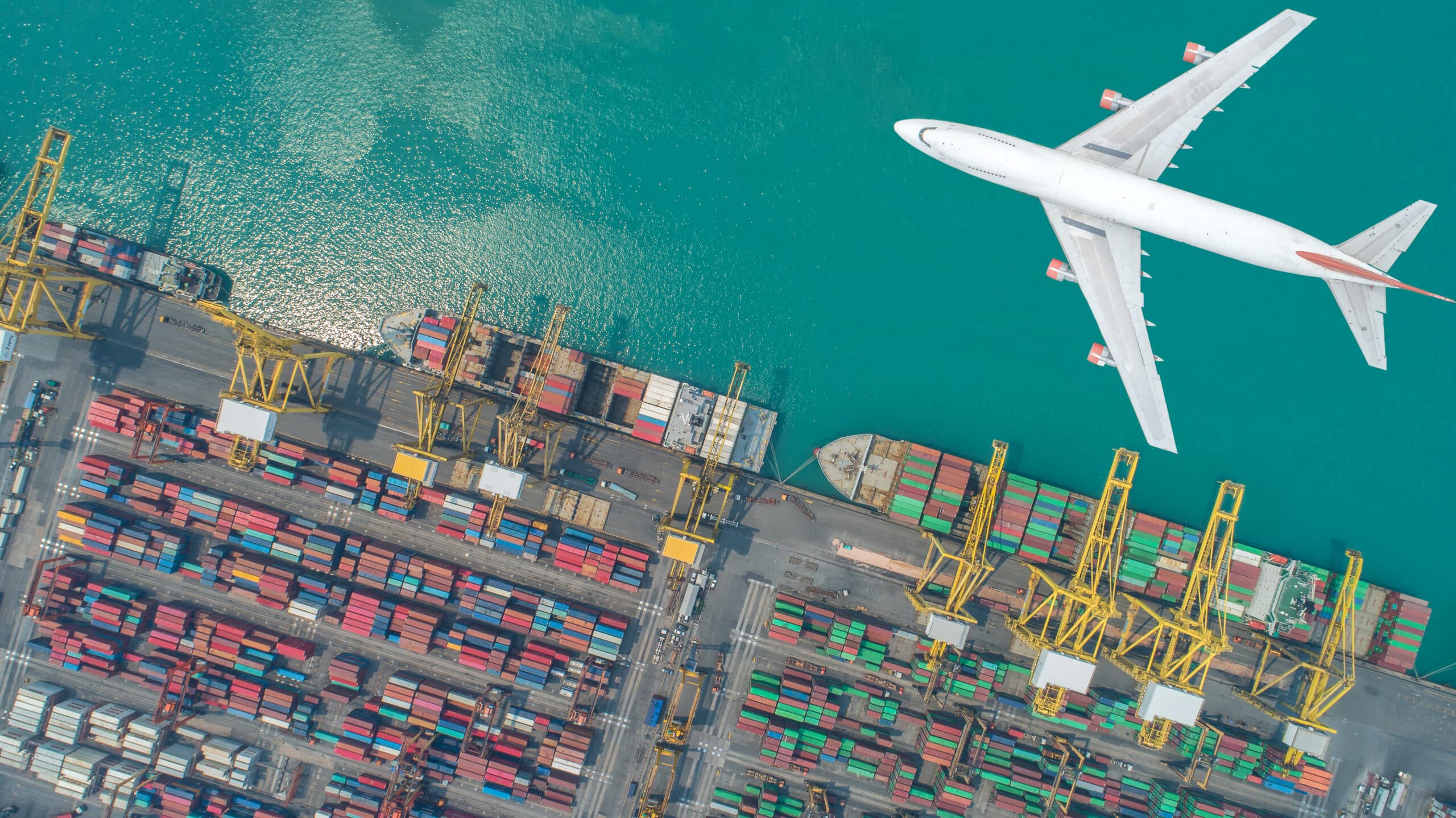Air Freight vs. Sea Freight: Which is Best for Your Business?
21 January 2025 | 04:07 PM

Choosing the right freight forwarding method is a critical decision for businesses, as it directly impacts costs, delivery timelines, and overall customer satisfaction. For companies in Singapore, air freight and sea freight forwarding services are two primary shipping options, each offering distinct advantages depending on the nature of your business and shipping needs.
This article will explore the key differences between air freight in Singapore and sea freight forwarding services, focusing on factors like cost, speed, shipment size, and environmental impact. By the end, you’ll have the insights needed to make an informed decision on which method best suits your business operations.
Understanding Air Freight and Sea Freight
Before we delve into the specifics, let’s define these two shipping methods:
Air Freight
Air freight refers to the transportation of goods by aircraft, typically used for time-sensitive or high-value shipments. It offers the fastest mode of transportation, making it ideal for perishable goods, critical spare parts, or products with short life cycles. Common use cases for air freight include shipping medical supplies, electronics, fashion items, and other goods where speed is crucial.
Industries that heavily rely on air freight services include technology (electronics, computer components), pharmaceuticals (medicines, vaccines), and luxury goods (high-end fashion, jewellery). These sectors prioritise rapid delivery to meet market demands, maintain product freshness, or cater to time-sensitive events and product launches.
Sea Freight
Sea freight, on the other hand, involves the transportation of goods by sea vessels, such as cargo ships or container ships. It is typically used for larger, non-perishable shipments and is a more economical option compared to air freight. Sea freight is commonly used for bulk goods, heavy machinery, raw materials, and large shipments that are not time-sensitive.
Common use cases for sea freight include shipping construction materials, automotive parts, furniture, and other durable goods. It is also widely used for transporting commodities like grains, coal, and oil.
Typical industries that heavily rely on sea freight services include manufacturing, retail, and international trade. These sectors often need to transport large volumes of goods across long distances, and sea freight provides a cost-effective solution for their shipping needs. Additionally, industries dealing with heavy equipment, machinery, or raw materials, such as the construction and mining sectors, frequently utilise sea freight for their shipments.
Key Factors to Consider When Choosing a Freight Option
When choosing between air freight and sea freight, several factors come into play. Here are some key considerations:
Cost
Air freight is generally more expensive than sea freight due to the higher operational costs associated with air transportation. The cost of air freight is typically calculated based on the weight of the shipment (per kilogram) and includes additional charges such as fuel surcharges, security fees, and handling fees. These costs can fluctuate based on factors like fuel prices, distance, and route.
On the other hand, sea freight costs are primarily determined by the size and weight of the shipment, typically calculated per container. Additional charges may include port fees, customs clearance fees, and handling fees. While sea freight is generally more affordable than air freight, the overall cost can vary depending on the origin, destination, and any additional services required.
When comparing the upfront costs, air freight is significantly more expensive than sea freight. However, it’s important to consider the long-term implications and potential cost savings associated with faster transit times. For time-sensitive shipments or perishable goods, the higher cost of air freight may be justified to ensure timely delivery, avoid spoilage, and meet market demands. Conversely, for non-perishable or non-time-sensitive shipments, the lower upfront cost of sea freight can provide substantial cost savings, especially for larger volumes or heavier cargo.
Speed and Transit Time
Typical delivery times for air freight vs. sea freight vary significantly. Air freight is the fastest mode of transportation, with shipments often arriving at their destination within a few days, depending on the distance and route. For example, a shipment from New York to London can be delivered within a day or two via air freight. In contrast, sea freight can take several weeks or even months to reach its destination, depending on the distance and the specific route.
Speed is critical in certain scenarios, such as the transportation of seasonal goods or time-sensitive products. For instance, the fashion industry relies heavily on air freight to ensure that new collections and seasonal items reach stores and customers in a timely manner. Similarly, the electronics industry often utilises air freight to meet market demands for the latest gadgets and devices, ensuring they are available to consumers as soon as possible. Additionally, industries dealing with perishable goods, such as fresh produce or pharmaceuticals, frequently opt for air freight to minimise spoilage and maintain product quality during transit.
Shipment Size and Weight
Air freight has limitations on the size and weight of shipments due to the cargo capacity constraints of aircraft. Most airlines impose restrictions on dimensions, weight, and special handling requirements for air freight shipments. These limitations vary depending on the type of aircraft and the specific airline’s policies.
In contrast, sea freight offers greater flexibility and capacity for larger and heavier shipments. Cargo ships can accommodate a wide range of shipment sizes, from small parcels to oversized or heavy machinery. Sea freight also provides options for Full Container Load (FCL) and Less-than-Container Load (LCL) shipments.
FCL refers to the exclusive use of a full container for a single shipment, allowing for greater control and security during transportation. This option is suitable for larger shipments or when the cargo requires specialised handling or temperature control.
LCL, on the other hand, involves sharing a container with other shipments from different customers. This option is more cost-effective for smaller or lighter shipments, as the container space and transportation costs are shared among multiple parties. LCL offers flexibility and affordability, particularly for businesses with lower shipping volumes or those seeking to minimise their carbon footprint by consolidating shipments.
Reliability and Frequency
Air freight generally operates on a more frequent schedule compared to sea freight. Airlines offer multiple daily flights to major destinations, allowing for greater flexibility and shorter transit times. However, air freight operations can be more susceptible to disruptions caused by adverse weather conditions, such as severe storms, heavy winds, or fog, which can lead to flight delays or cancellations.
On the other hand, ships typically operate on weekly or bi-weekly schedules between major ports, making sea freight schedules less frequent. While weather conditions affect sea freight less, factors like port congestion, labor disputes, or other logistical challenges can still delay cargo loading and unloading.
Additionally, air freight shipments are typically subject to stricter security screening and customs clearance procedures, which can contribute to potential delays or disruptions. Sea freight, while also subject to customs regulations, generally has more streamlined processes in place for handling large volumes of cargo.
Environmental Impact
Air freight has a significantly higher carbon footprint compared to sea freight due to the vast amounts of fuel consumed by aircraft. According to industry estimates, air freight can emit up to 20 times more carbon dioxide per ton-kilometer than maritime shipping. This substantial difference highlights the environmental impact of air transportation and its contribution to greenhouse gas emissions.
On the other hand, sea freight is considered a more environmentally friendly option due to its lower fuel consumption and emissions per unit of cargo transported. Shipping companies are actively exploring sustainable practices, such as using alternative fuels like liquefied natural gas (LNG) or biofuels, implementing energy-efficient technologies, and optimising voyage planning to reduce emissions.
Furthermore, the shipping industry is actively pursuing initiatives to promote sustainable practices. For example, the International Maritime Organization (IMO) has set targets to reduce greenhouse gas emissions from international shipping by at least 50% by 2050 compared to 2008 levels. Shipping companies are investing in newer, more efficient vessels, implementing energy management systems, and exploring alternative propulsion technologies to achieve these goals.
When to Choose Air Freight
Air freight is the preferred choice in the following situations:
- When speed is crucial, such as urgent deliveries or time-sensitive shipments. Air freight offers significantly faster transit times compared to sea freight, making it ideal for businesses that cannot afford delays.
- For transporting high-value or lightweight goods. The higher costs associated with air freight may be justified for valuable items or when the weight of the shipment is relatively low, minimising transportation expenses.
- Industries that operate in time-sensitive environments, such as fashion, electronics, or perishable goods. The rapid delivery times provided by air freight can be essential for businesses that need to respond quickly to market demands or ensure the freshness of their products.
Businesses operating in these scenarios often prioritise speed and reliability over cost considerations, as air freight provides a reliable and expedited solution for their shipping needs.
When to Choose Sea Freight
Sea freight is the preferred choice when:
- Shipping Large, Heavy, or Bulk Shipments: Sea freight is ideal for transporting voluminous or heavy cargo, such as industrial machinery, raw materials, or bulk commodities. The capacity of cargo ships allows for the efficient transportation of large quantities of goods at lower costs per unit compared to air freight.
- Cost-Sensitive Businesses: For businesses operating on tight budgets or with a focus on cost optimisation, sea freight offers a more economical shipping option. The lower transportation costs associated with sea freight can significantly reduce overall shipping expenses, particularly for long-distance or international shipments.
- Flexible Delivery Timelines and Low Urgency Shipments: When the shipment is not time-sensitive and delivery deadlines are more flexible, sea freight can be a suitable choice. Businesses that can plan their supply chain operations well in advance and accommodate longer transit times can benefit from the cost savings offered by sea freight.
Sea freight is a practical solution for businesses that prioritise cost-effectiveness over speed, especially for non-perishable goods or products with longer shelf lives. It allows companies to balance their shipping needs with their budget constraints while still ensuring reliable and efficient transportation of their cargo.
Hybrid Shipping: Combining Air and Sea Freight
Hybrid shipping, also known as multimodal freight, combines the advantages of both air and sea freight to optimise costs and delivery times. This approach involves using air freight for a portion of the journey and sea freight for the remaining leg, leveraging the strengths of each mode of transportation.
By combining air and sea freight, businesses can benefit from the speed of air transportation for time-sensitive or high-priority shipments while taking advantage of the cost-effectiveness of sea freight for the remaining journey. This strategy allows companies to strike a balance between speed and cost, ensuring that their goods reach their destination within a reasonable timeframe while minimising overall shipping expenses. Hybrid shipping works best in the following scenarios:
- Time-Sensitive Shipments with Long-Distance Destinations: When shipping goods to distant locations with tight delivery deadlines, businesses can utilise air freight for the initial leg of the journey to quickly cover the long distances, ensuring time-critical shipments stay on schedule. Once the shipment reaches a strategic location closer to the final destination, it can be transferred to a sea vessel for the remaining leg, reducing costs while still meeting the required delivery timeline.
- High-Value, Low-Weight Goods: For high-value, low-weight goods, such as electronics, luxury items, or specialised equipment, hybrid shipping can be an optimal solution. The initial air freight leg ensures rapid transportation, while the sea freight portion minimises costs for the remaining journey, providing a cost-effective solution without compromising delivery times.
- Seasonal or Promotional Campaigns: During peak seasons or promotional campaigns, businesses may face increased demand and tight deadlines. Hybrid shipping allows them to quickly replenish inventory or deliver promotional items to key markets using air freight, while leveraging sea freight for the remaining bulk shipments, optimising speed and cost-effectiveness.
Conclusion
Air freight and sea freight offer distinct advantages and trade-offs in terms of speed, cost, and reliability. Air freight is significantly faster but more expensive, making it ideal for time-sensitive or high-value shipments where speed takes precedence over cost. Sea freight, on the other hand, is more cost-effective but slower, making it suitable for non-urgent shipments where cost is a primary concern.
When choosing between air freight and sea freight, businesses should carefully assess their specific needs, priorities, and budgets. Time-sensitive shipments, high-value goods, or promotional campaigns may warrant the higher cost of air freight, while non-urgent or bulk shipments can benefit from the cost savings of sea freight.
Need help choosing the perfect freight solution? Whether it’s speed by air or scale by sea, we’ve got you covered. Let’s find the shipping strategy that matches your business needs—contact us today to get started!


